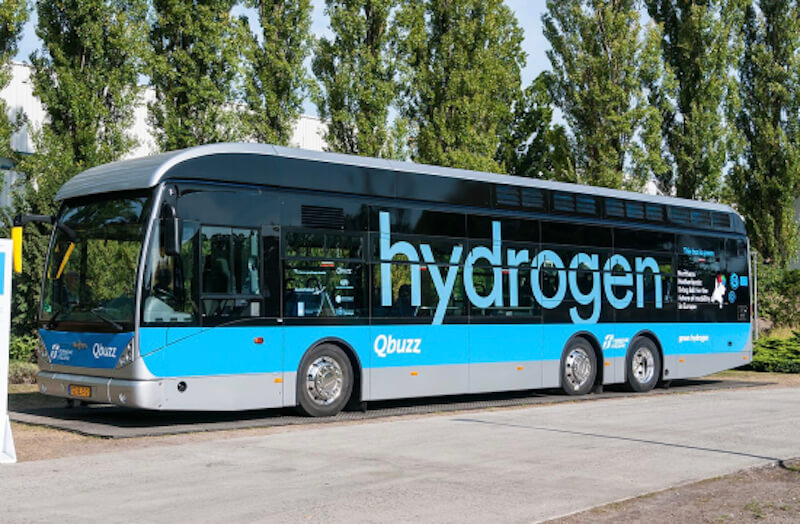On India’s 75th Independence Day, hon’ble Prime Minister Shri Narendra Modi launched the National Hydrogen Mission of India. The Mission aims to aid the government in meeting its climate targets and making India a green hydrogen hub. The mission identified a target of production of 5 million tonnes of Green hydrogen by 2030 and the related development of renewable energy capacity. In its bid to promote production & use of Green Hydrogen in India, On 17th February 2022, the Union Ministry of Power notified Green Hydrogen/ Green Ammonia Policy.
Hydrogen and Ammonia are envisaged to be the future fuels to replace fossil fuels. Production of these fuels by using power from renewable energy, termed as green hydrogen and green ammonia, is one of the major requirements towards environmentally sustainable energy security of the nation. Government of India is taking various measures to facilitate the transition from fossil fuel / fossil fuel based feed stocks to green hydrogen / green ammonia. The notification of this policy is one of the major steps in this endeavour.
The Green Hydrogen policy provides as follows :
- Green Hydrogen / Ammonia manufacturers may purchase renewable power from the power exchange or set up renewable energy capacity themselves or through any other, developer, anywhere.
- Open access will be granted within 15 days of receipt of application.
- The Green Hydrogen / Ammonia manufacturer can bank his unconsumed renewable power, up to 30 days, with distribution company and take it back when required.
- Distribution licensees can also procure and supply Renewable Energy to the manufacturers of Green Hydrogen / Green Ammonia in their States at concessional prices which will only include the cost of procurement, wheeling charges and a small margin as determined by the State Commission.
- Waiver of inter-state transmission charges for a period of 25 years will be allowed to the manufacturers of Green Hydrogen and Green Ammonia for the projects commissioned before 30th June 2025.
- The manufacturers of Green Hydrogen / Ammonia and the renewable energy plant shall be given connectivity to the grid on priority basis to avoid any procedural delays.
- The benefit of Renewable Purchase Obligation (RPO) will be granted incentive to the hydrogen/Ammonia manufacturer and the Distribution licensee for consumption of renewable power.
- To ensure ease of doing business a single portal for carrying out all the activities including statutory clearances in a time bound manner will be set up by MNRE.
- Connectivity, at the generation end and the Green Hydrogen / Green Ammonia manufacturing end, to the ISTS for Renewable Energy capacity set up for the purpose of manufacturing Green Hydrogen / Green Ammonia shall be granted on priority.
- Manufacturers of Green Hydrogen / Green Ammonia shall be allowed to set up bunkers near Ports for storage of Green Ammonia for export / use by shipping. The land for the storage for this purpose shall be provided by the respective Port Authorities at applicable charges.
The implementation of this Policy will provide clean fuel to the common people of the country. This will reduce dependence on fossil fuel and also reduce crude oil imports. The objective also is for our country to emerge as an export Hub for Green Hydrogen and Green Ammonia.
The policy promotes Renewable Energy (RE) generation as RE will be the basic ingredient in making green hydrogen. This in turn will help in meeting the international commitments for clean energy.
Benefits of Green Hydrogen Policy:
The green hydrogen policy will help cut the cost of manufacturing green hydrogen by 40-50 per cent. The cost of generation of electricity from Solar is about Rs 2 INR (large solar power plants). This eventually comes to a landed price of Rs 4 to 7 per unit after adding different levies during its transit through transmission lines in different states.
At a factory-gate cost of Rs 4 to 7 per unit, green hydrogen production costs come to Rs 500 per kg. This cost compares with the current grey hydrogen cost of Rs 150 per kg. Under the green hydrogen policy announced on February 17, the renewable energy used for green hydrogen production will get open access without central surcharge and zero inter-state transmission charges for 25 years for projects commissioned before June 30, 2025. This will essentially bring the cost of green hydrogen production down by 40 to 50 per cent.
The cost will go down further if electrolyzers, used to split water into two hydrogen atoms and one oxygen atom, are indigenously manufactured instead of the present practice of importing them. India is targeting 15 gigawatts (GW) of electrolyzer-making capacity and is considering production-linked incentives to encourage local manufacturing.
Applications of Green Hydrogen
Oil refineries, fertiliser plants and steel units use hydrogen as process fuel to produce finished products. In refineries, hydrogen is used to remove excess sulphur from petrol and diesel. This hydrogen presently is produced from fossil fuels such as natural gas or naphtha and results in carbon emissions.
IOC plans to set up a 40 MW electrolyzer at Mathura refinery and a 15 MW unit at Panipat unit in Haryana, he said, adding the firm is targeting to produce 70,000 tonnes a year of green hydrogen by 2030, accounting for 10 per cent of its overall consumption by that time. Across all refineries, the current hydrogen demand is about 1.4 million tonnes, which is projected to rise to 2.6 million tonnes by 2030. He said IOC is also exploring manufacturing of electrolyzers or outsourcing the production of green hydrogen.
The current cost estimates are based on alkaline water electrolysis, which consumes some 55 units to produce 1 kg of hydrogen. The use of polymer electrolyte membrane (PEM) electrolysis would bring down the requirement of electricity by 10 units, thus further reducing cost. The government on February 17 announced the first stage of policies to encourage green hydrogen/ ammonia development in the country, with plans to reach 5 million tonnes per annum of output by 2030.

